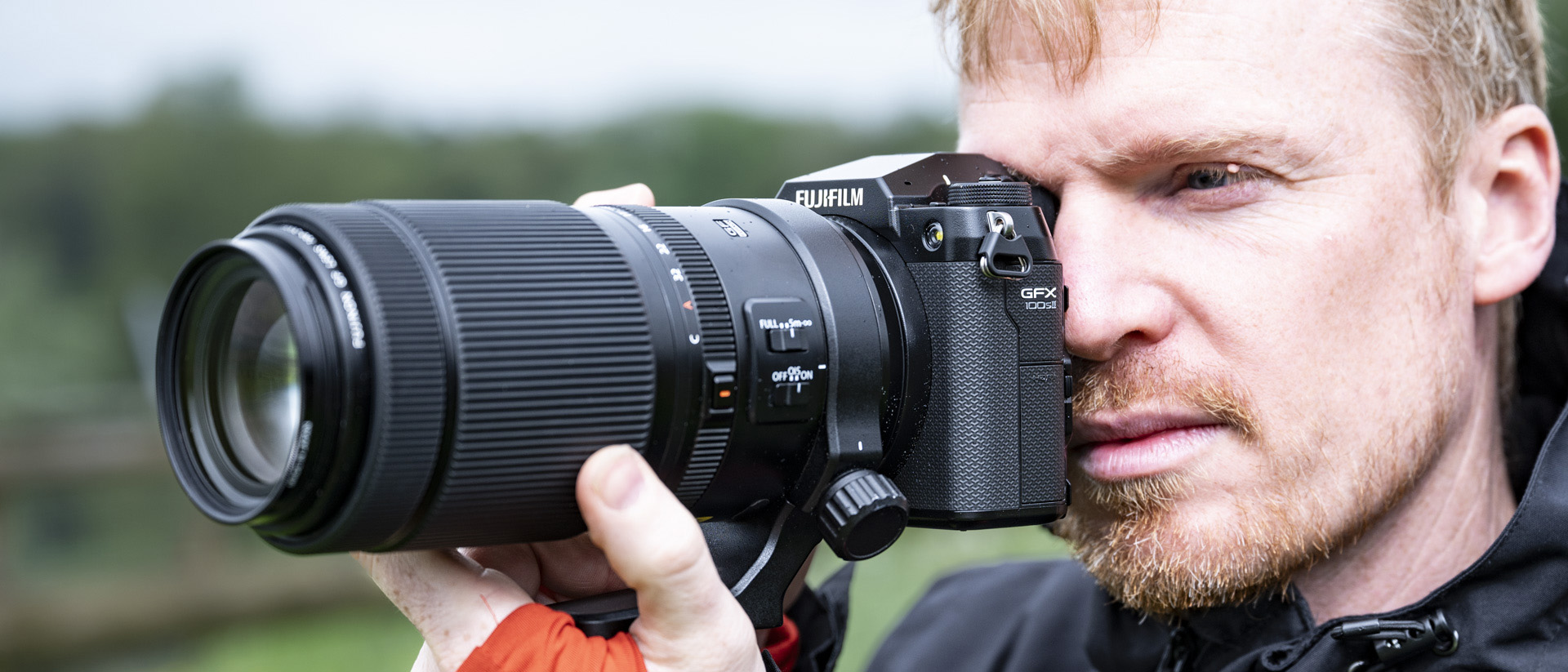Early Verdict
Fujifilm has trickled down features from its flagship medium-format GFX100 II into the more affordable and photography-focused GFX100S II, creating what is probably the best medium-format camera for most people. You get the 102MP sensor with 8-stops of image stabilization, a compact and comfortable form factor (relative to the sensor size), and improved performance which includes decent subject detection autofocus. That the GFX100S II costs only $5,000 / £5,000 / AU$8,700 makes it an enticing alternative to pro full-frame cameras, especially if you need detail over outright speed.
Pros
- +
Superb image quality
- +
Excellent ergonomics and balance with lighter GF lenses
- +
Decent value (for what it is)
Cons
- -
GF lenses are chunky and usually pricier than full-frame
- -
Autofocus can't match best full-frame cameras
- -
Might not be worth the upgrade
Why you can trust TechRadar
Fujifilm GFX100S II: two-minute review
Fujifilm has bucked the trend by launching a new camera that is actually cheaper than its predecessor, despite three years of inflation and the improved features on board. There is, therefore, more to the new Fujifilm GFX100S II than its upgraded features – it's priced aggressively to grab the attention of pro photographers teetering between the best full-frame cameras and medium-format.
Costing around 10% less than the GFX100S was at launch, the GFX100S II is available for $5,000 / £5,000 / AU$8,700, which is a similar price to what you'd pay for comparable full-frame mirrorless cameras – a sensor format Fujifilm isn't making cameras for, but a market it clearly wants a piece of.
And with a whopping 102MP sensor creating high-resolution images exceeding those from any full-frame model, even those shot with the class-leading Sony A7R V, there are plenty of pros who could be better served by the GFX100S II's larger medium-format.
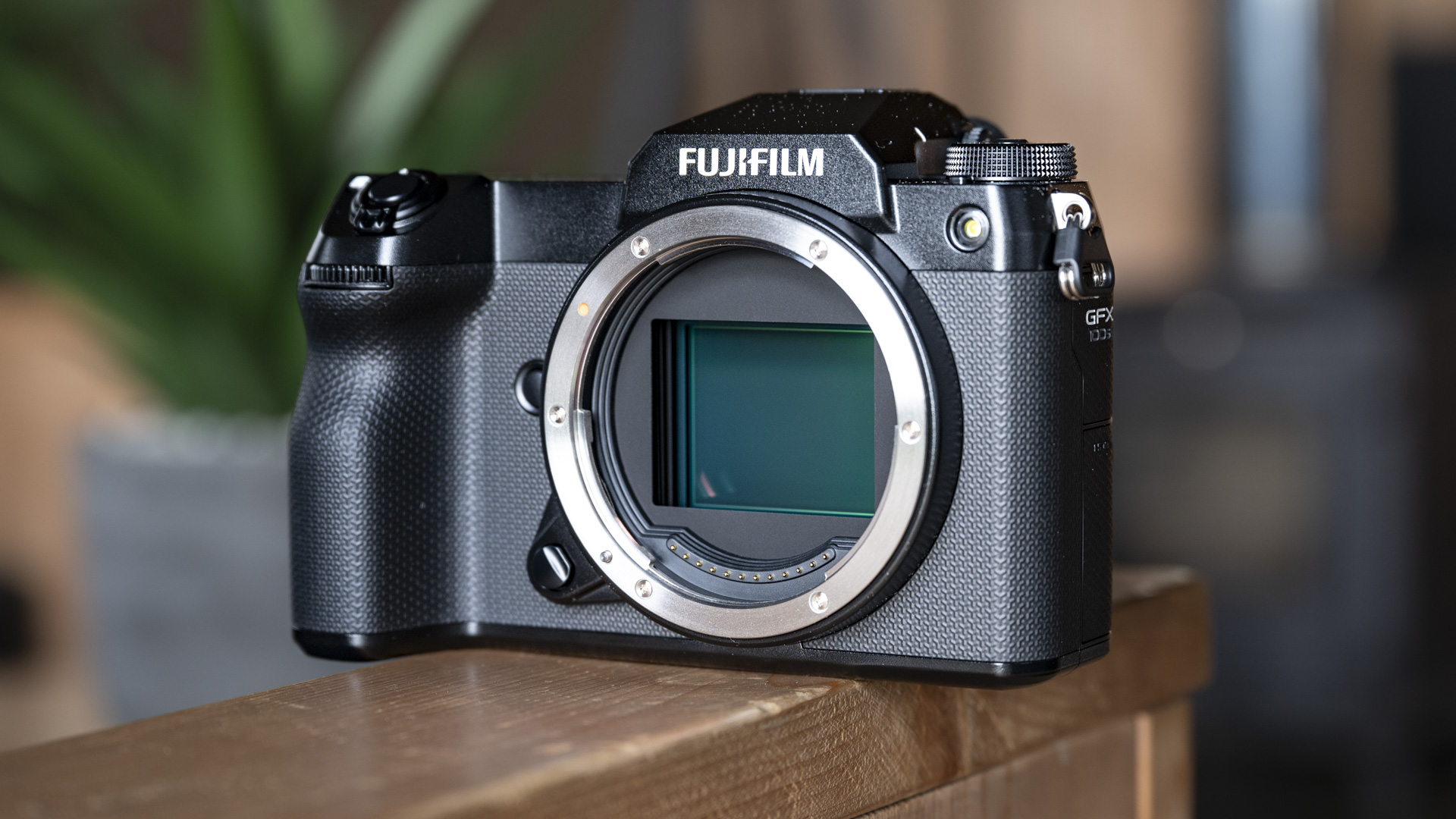
Not only has Fujifilm priced the GFX100S II aggressively, but it has trickled down some of the most powerful features the format has ever seen from the pricier GFX100 II flagship, including 7fps burst shooting and AI subject detection autofocus.
It might not be quite as fast as the GFX100 II overall, but the GFX100S II is no slouch and goes some way to put to bed the notion that medium-format is simply slow and confined to a small number of scenarios, such as studio portraiture.
During my hands-on time with the GFX100S II, I've taken photos and videos of animals in a wildlife reserve and been super impressed by the details in those images, but also by the overall speed and autofocus performance in what were pretty challenging scenarios, such as shooting through foliage and enclosure fencing.
The question now for pro photographers considering a larger medium-format camera is less about budget and more about needs. Yes, the GFX100S II is still slower in general than a camera like the Sony A7R V, but not by a lot. And with it you get higher-resolution images with true-to-life colors that are noticeable to pros – at times making full-frame camera image quality feel ordinary.
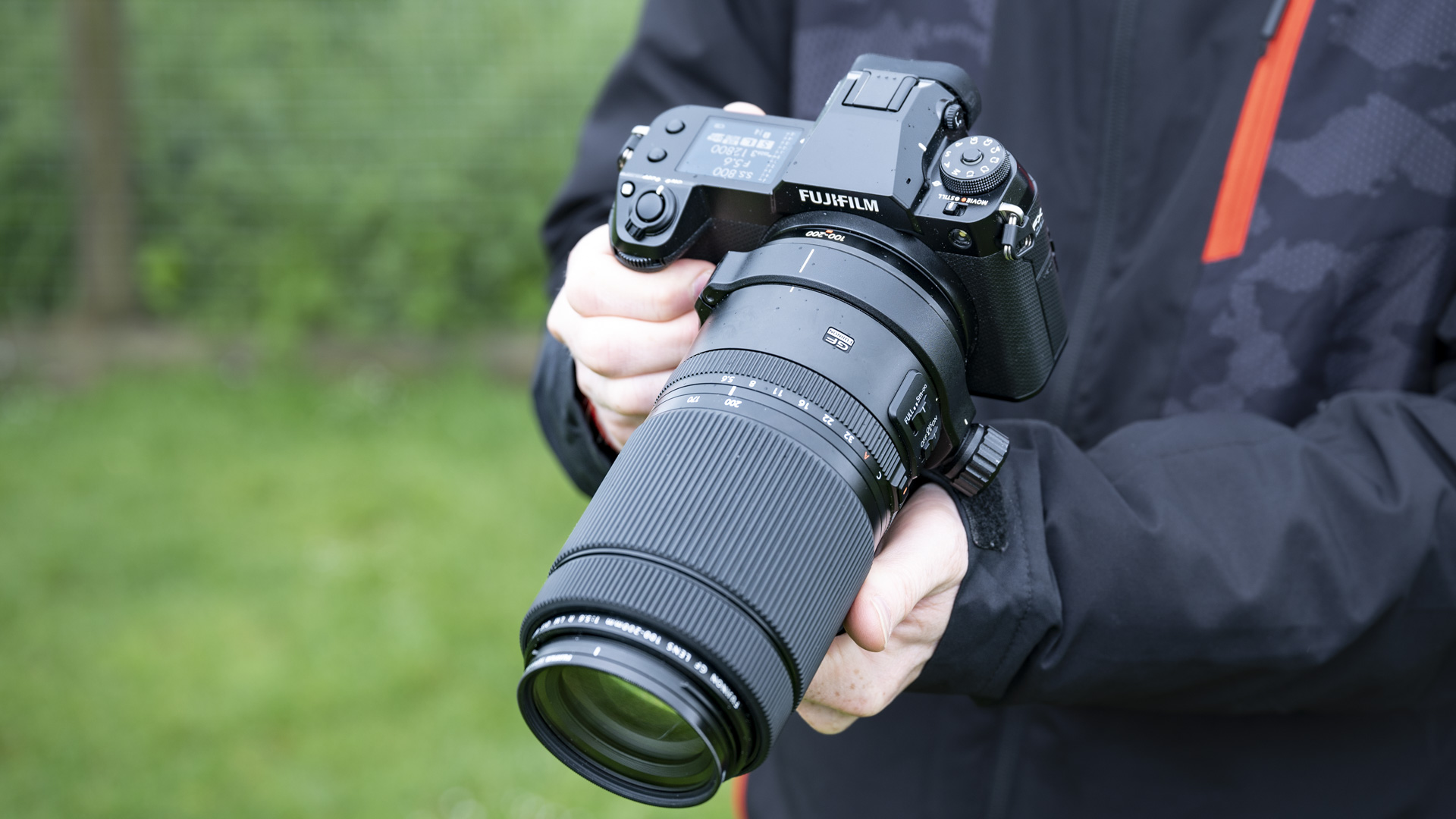
For balance, we do need to consider the system that a camera is part of. Thankfully, there are numerous decent Fujifilm GF lenses for the GFX100S II. However, in general they are pricier and chunkier than full-frame equivalents.
Also, for most users interested in the format, there might not be enough reason to upgrade from the GFX100S II's predecessor, the GFX100S, which despite being phased out is still available to buy and now at cut prices – just $4,399 at B&H Photo or £3,499 at WEX – and with which you still get 102MP photos.
All being said, if you weren't already sure about the sensor format, the GFX100S II is the most compelling case for medium-format yet.
Fujifilm GFX100S II: release date and price
- Body-only price is $4,999 / £4,999 / AU$8,699
- Available from June 17
- Optional metal grip available, but no vertical battery grip
- Launched alongside the GF 500mm f/5.6 lens, which costs $3,499 / £3,499 / AU$6,099
Fujifilm is clearly going after those teetering between full-frame and medium format, aggressively pricing the GFX100S II. It's actually cheaper than the GFX100S was at launched by around 10%, despite three years of inflation and the improved features added.
At $4,999 / £4,999 / AU$8,699 in body-only form, the GFX100S II is going up against some of the best full-frame cameras, such as the Nikon Z8 and Sony A7R V, and is a decent alternative for those that need the best image quality over outright speed.
Unlike the flagship GFX100 II, you can't buy a vertical grip for the GFX100S II, which would improve the ergonomics with larger lenses and increase battery life. However, you can buy a standard metal hand grip for $120 / £135 / AU$245. There's no word on kit bundles yet, but we do know the sales start date, which is June 17.

Fujifilm GFX100S II: design and handling
- Same body layout as the GFX100S, but with 'bishamon-tex' leather exterior
- Improved 5.76m-dot non-removable EVF
- Two-way tilt touchscreen great for shooting at awkward angles
It might look different to the GFX100S, but the GFX100S II has pretty much the same control layout and form factor. The key difference in the looks department is the camera's finish, which is Fujifilm's 'bishamon-tex' leather, as first seen in the GFX100 II (see photo, below).
The leather finish is a departure from Fujifilm's retro roots and steps into a modern aesthetic that I'm a fan of. Otherwise, it's as you were with its predecessor, meaning a rugged DSLR-style camera with deep and comfortable grip, plus generous displays that include an improved EVF, versatile multi-angle touchscreen and generous top LCD display.
The latest model is actually slightly lighter than the first one, at 1.95lb / 883g, yet remains well-balanced even with Fujifilm's chunkier GF lenses, such as the 100-200mm f/5.6 R LM OIS WR and new GF 500mm f/5.6 that I had during my hands-on.
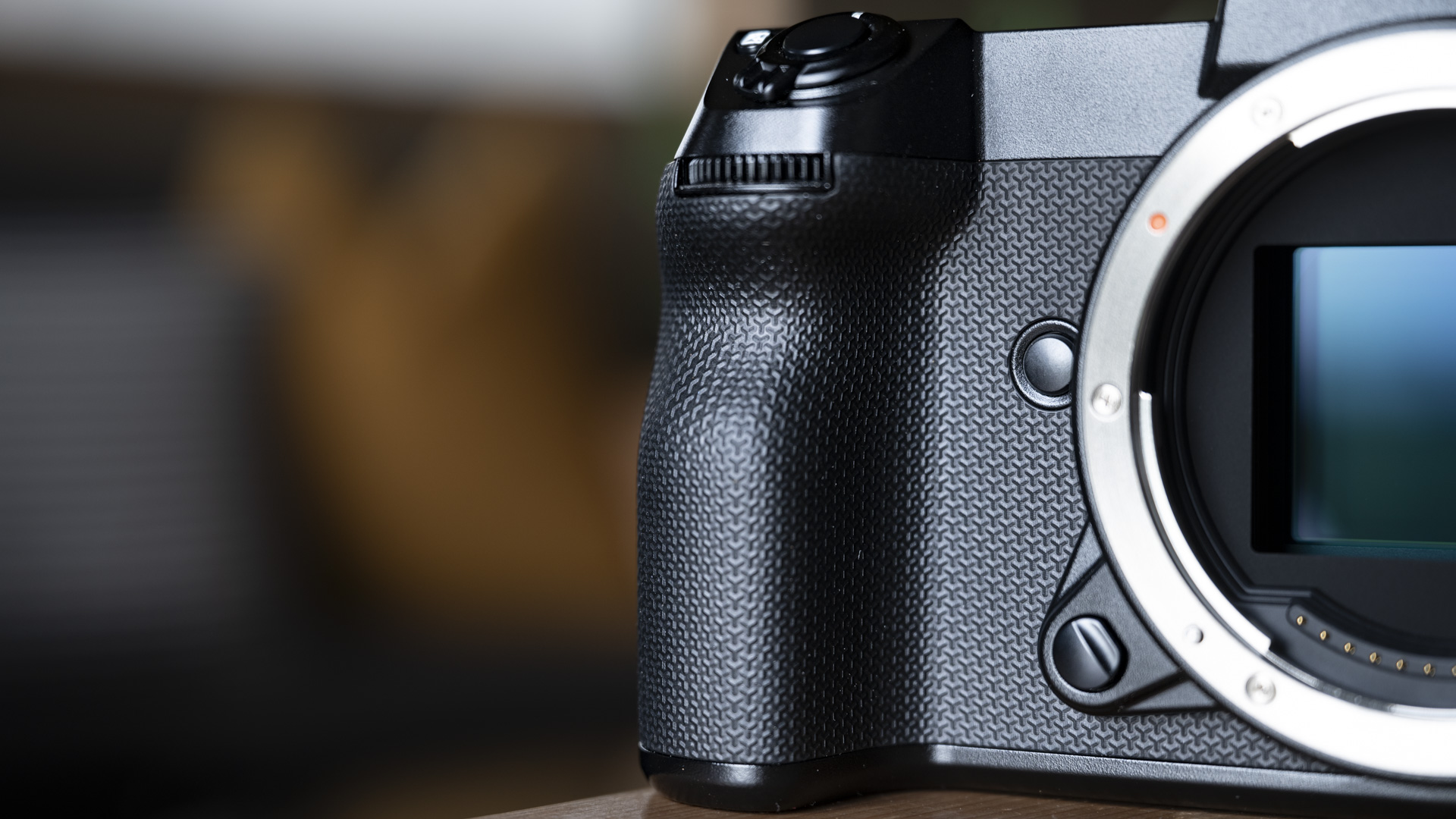
The camera is akin to a mid-size full-frame camera such as the mirrorless Nikon Z8 or the Canon EOS 5D Mark IV DSLR, and lighter than a sports-style shooter like the Canon EOS R3. With a GF lens attached, it's not the sort of setup you can comfortably carry for hours on end, but it's easy enough to operate.
Sensor: 102MP medium format CMOS
Image processor: X-Processor 5
AF system: Hybrid with phase-detect
EVF: 5.76-million dot OLED
ISO range: 80 to 12,800 (ISO 40-102,400 extended range)
Video: 4K/30p 4:2:2 10-bit internal
LCD: 3.2-inch multi-direction tilting touchscreen, 2.36m-dots
Max burst: Up to 7fps
Connectivity: Wi-Fi, Bluetooth
Weight: 883g (body only)
Fujifilm has been able to improve on the GFX100S without encroaching too closely on the current flagship GFX100 II. For example, the EVF has a decent bump in resolution at 5.76m-dots, with a healthy 0.84x magnification, while the pricier GFX100 II has a 9.44m-dot EVF and 1x magnification, plus its viewfinder can be removed or modified using a tilt adaptor.
While the EVF specs are a step down, the display in the GFX100S II is wonderfully big and bright, though like with a lot of EVFs you get lag in low-light conditions.
What remains the same – and needed no real improvement – is the rear LCD, which is a two-way tilt touchscreen. It can't be flipped around for selfies, but it can be tilted in both vertical and horizontal orientations, making it a breeze to view and to operate from virtually any position.
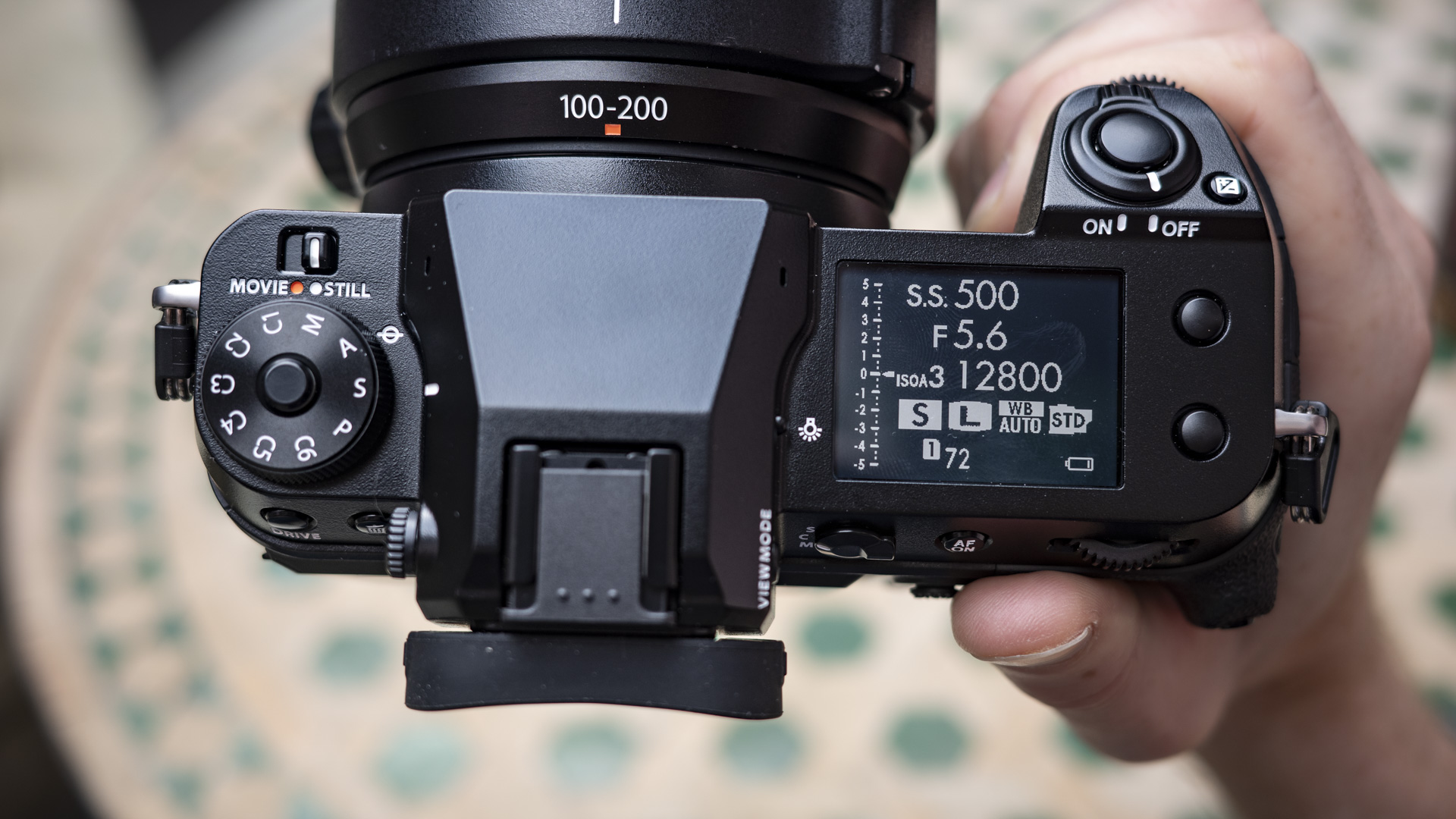
The backlit top LCD is super-handy, too. It displays exposure information by default, but you can change that to show the histogram among other things. These are the kind of tools that pro photographers appreciate, making the GFX100S II a particularly good landscape photography camera.
For a camera this size, there are relatively few buttons and controls, making each one easy to find, and in general the tactile response of each control is spot on, although the joystick is a little stubborn.
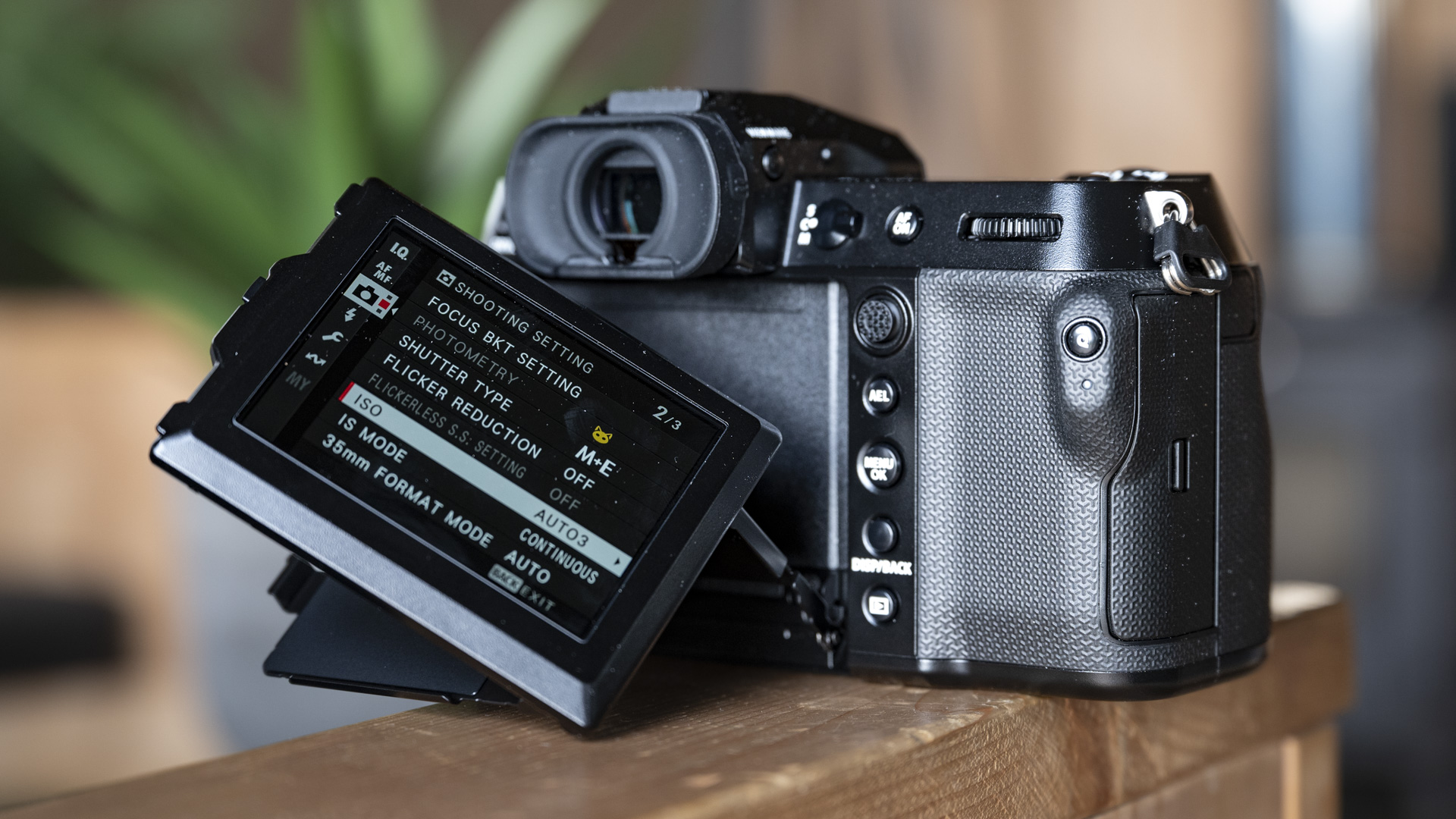
By design, the GFX100S II is a photography-first camera, although there's all the basics to support video recording, including a dedicated stills / movie switch, plus mic input, headphone jack and on-the-go USB-C charging.
We also get twin card slots, although both slots are SD card only. It's another differentiator from the flagship model, which can also hold the faster CFexpress Type B card type to better support powerful features, and we'll get onto those next.
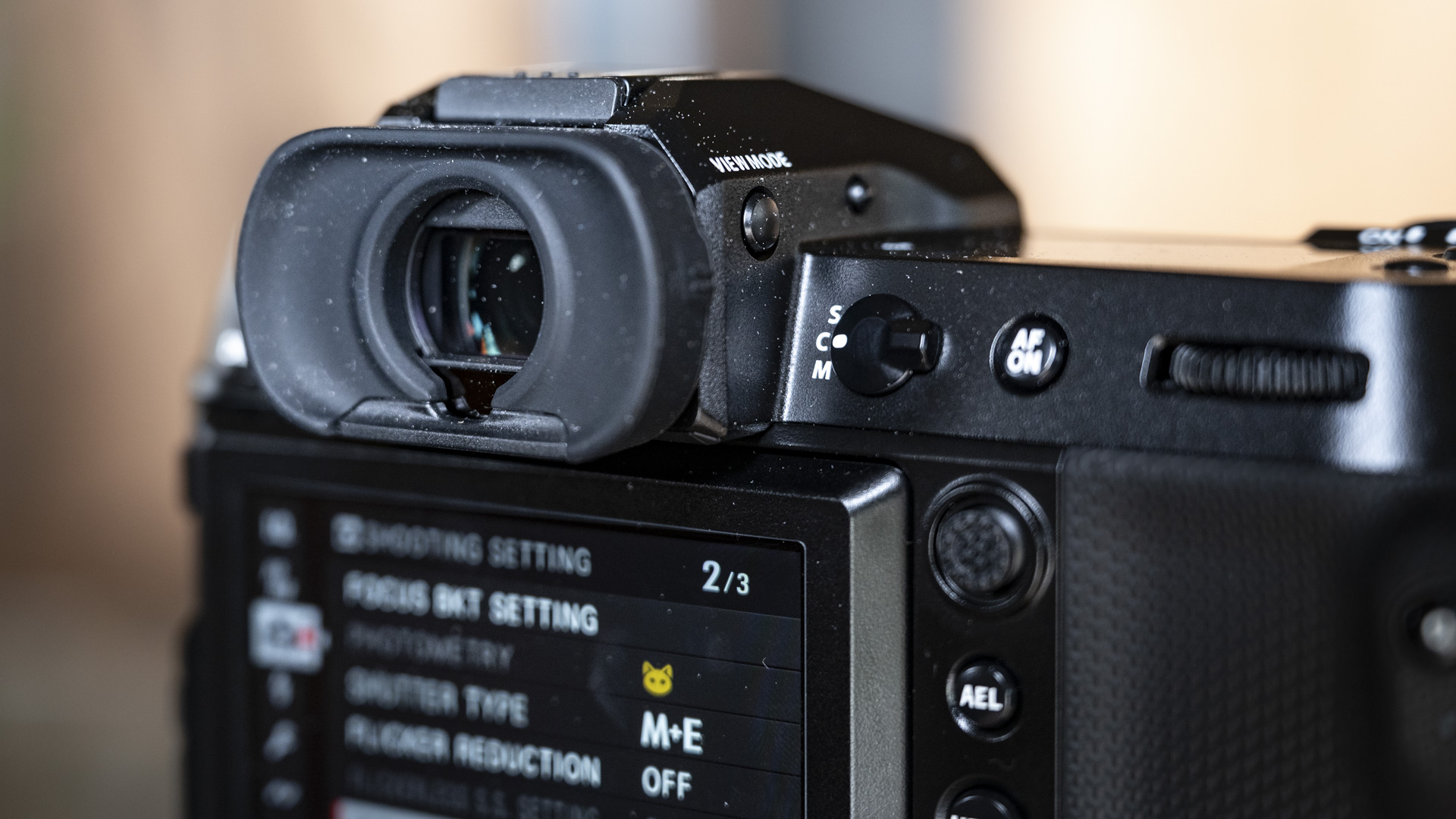
Fujifilm GFX100S II: features and performance
- Decent Hybrid AF with AI subject detection
- Up to 7fps (electronic) for almost 200 JPEGs
- Dual SD UHS-II slots but no CFexpress Type B support
- In-body image stabilization specs are optimistic
Fujifilm upped the bar with the GFX100 II, delivering never-before-seen medium-format performance. We can't expect the same power from the much cheaper GFX100S II, but it's no slouch.
The same X-Processor 5 engine can process 102MP files at 7fps for up to 184 JPEG images or 30 compressed raw files. Those burst-shooting sequences aren't quite as lengthy as you'll get on the GFX100 II, though if you don't mind dropping to 4.1fps then you'll get a huge bump in the number of frames you can capture.
A comparable full-frame camera such as the Sony A7R V can shoot at 10fps, but we should remember the huge file sizes that the GFX100S II is creating: the full- resolution raw files are around 200MB a pop and measure 11648x8736 pixels.
Burst-shooting sequences and buffer performance is compromised because the GFX100S II records on to SD UHS-II cards only, with dual card slots, while the GFX100 II can record to much snappier CFexpress Type B cards.

Fujifilm says in-body image stabilization (IBIS) performance is improved, with up to 8-stops of stabilization depending on the lens in use. IBIS is possibly the single most important feature of a high-resolution camera like this, compensating for camera shake when shooting handheld to ensure sharp detail.
It's IBIS that enables a 102MP camera like the GFX100S II to break free from a tripod and truly be a handheld camera. Frankly, I found 8-stops a tad optimistic. First impressions are that Panasonic's IBIS in the full-frame Lumix S5 II performs better, as does the Hasselblad X2D 100C. With the new GF 500mm F5.6 lens I was reliably getting more like 4-stops stabilization, but in-the-field tests are hardly scientific and I'll run more diverse tests during a full review.
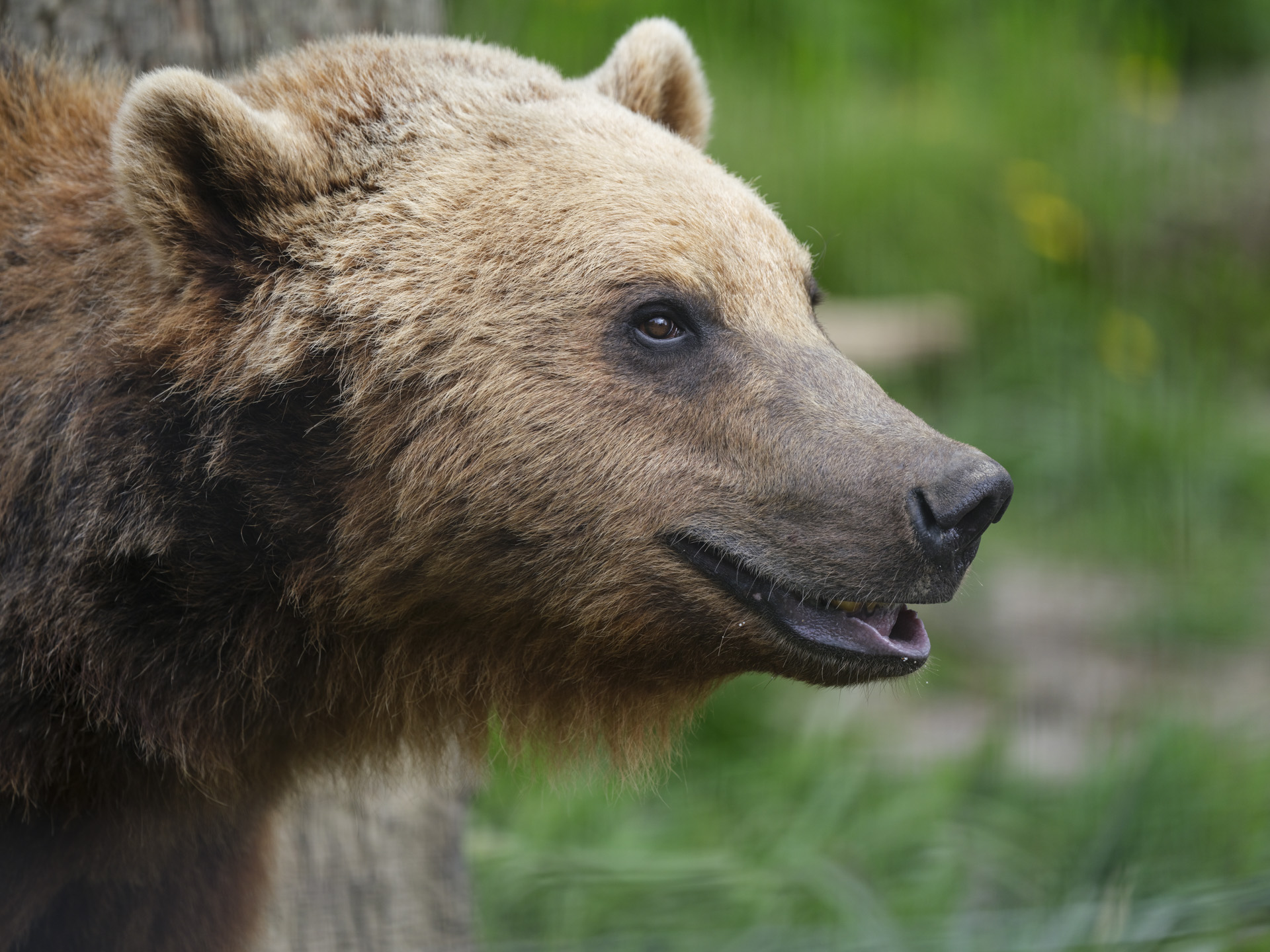
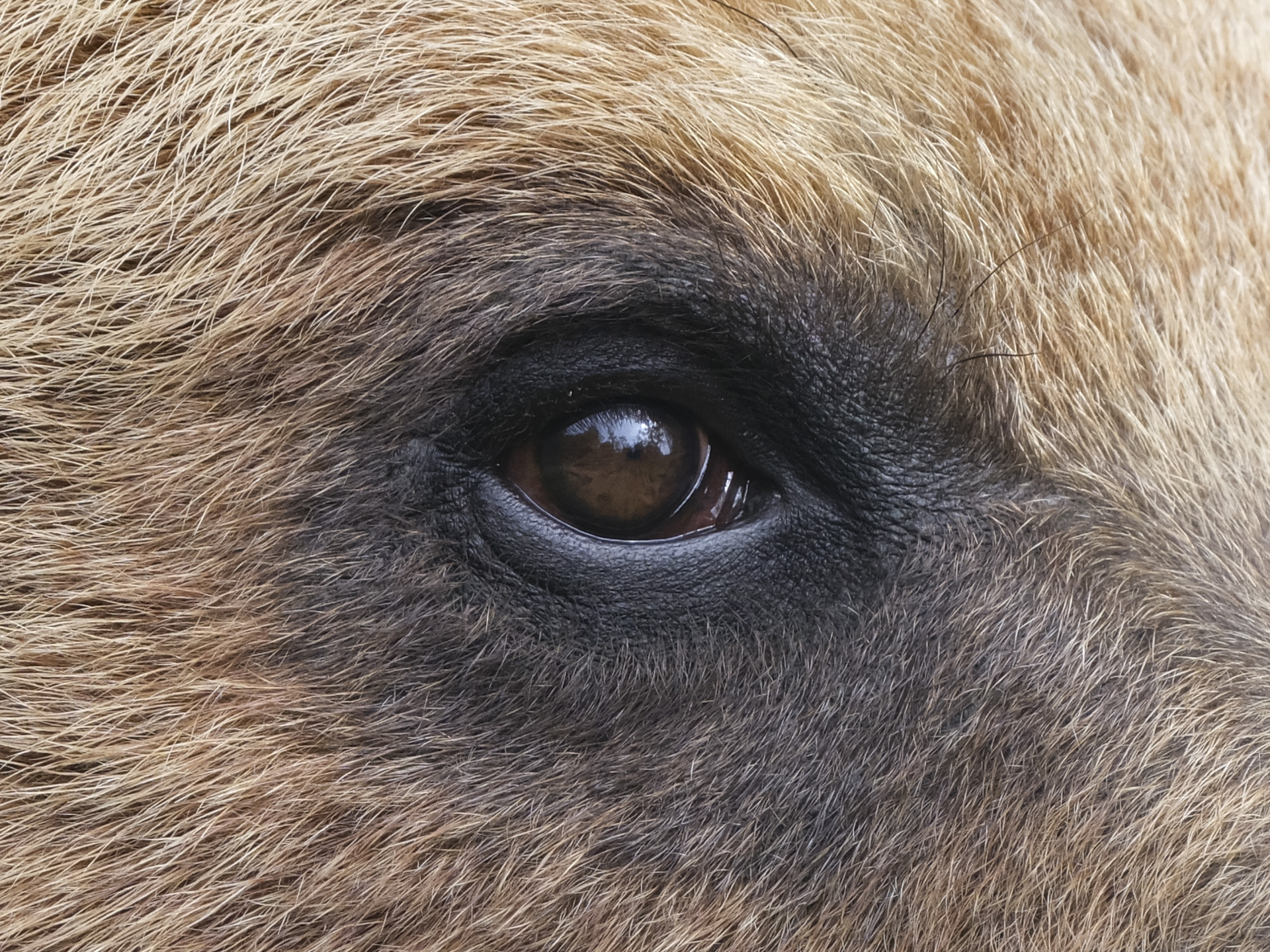
What you do get, though, is the best autofocus performance of any medium-format camera. Of course, being in a wildlife reserve I mainly stuck with the AI animal detection autofocus mode, and on the whole found it to be sticky and reliable, with visual confirmation that the subject's body and eye is being tracked. I have photos of bears with pin-sharp focus on the eyes (see above).
The Sony A7R V's autofocus is quicker and more intelligent, better able to recognize not just subjects but also its posture. In the low light of an enclosure I found the GFX100S II regularly mistook a gorilla's ear for its eye, whereas I'm sure the A7R V would've nailed it. There were also times that it simply couldn't autofocus at all through a fence, but these are challenging situations for any camera.
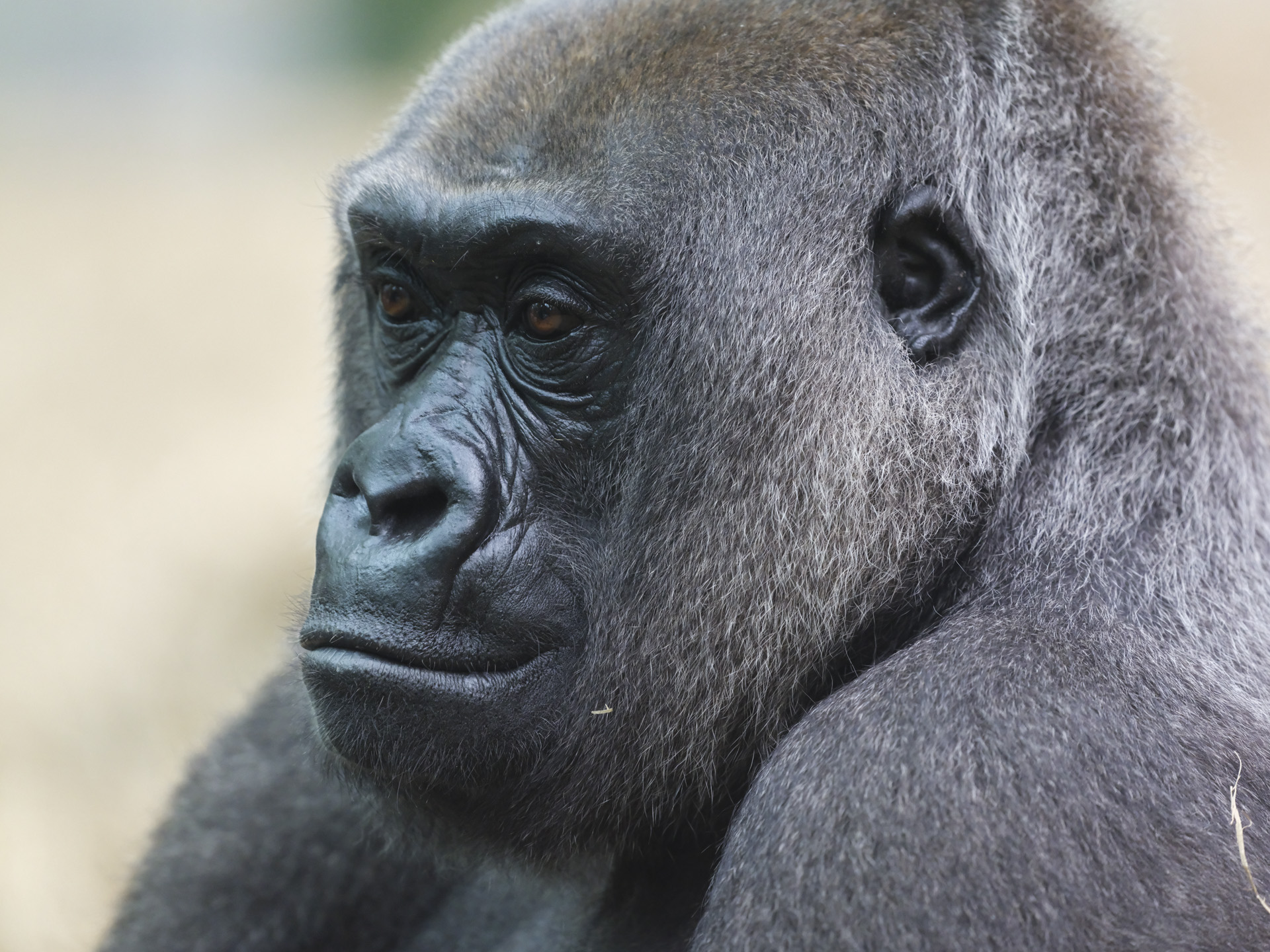
Fujifilm GFX100S II: image and video quality
- Incredibly detailed photos
- ISO 80-12,800 sensitivity range can be expanded to ISO 40-102,400
- Only 4K / 30p video, but with internal 4:2:2 10-bit
- Slightly slower sensor readout than the 'HS' sensor in the GFX100 II
- 20 film simulations
You're buying a 102MP camera like the GFX100 II because detail matters, and you get it in spades – all 11648x8736 pixels of it. Those 4:3 aspect ratio images made with one of Fujifilm's sharp GF lenses are breathtakingly detailed, especially in good light. This camera is an absolute dream for landscape photography.
What's more, such detail gives you immense cropping power, effectively extending your lens, which proved super-handy with the 500mm lens shooting wildlife photography. You can see the full image of a bear in the gallery below and a cropped version of the same image, which would still look great blown up large on screen or print.
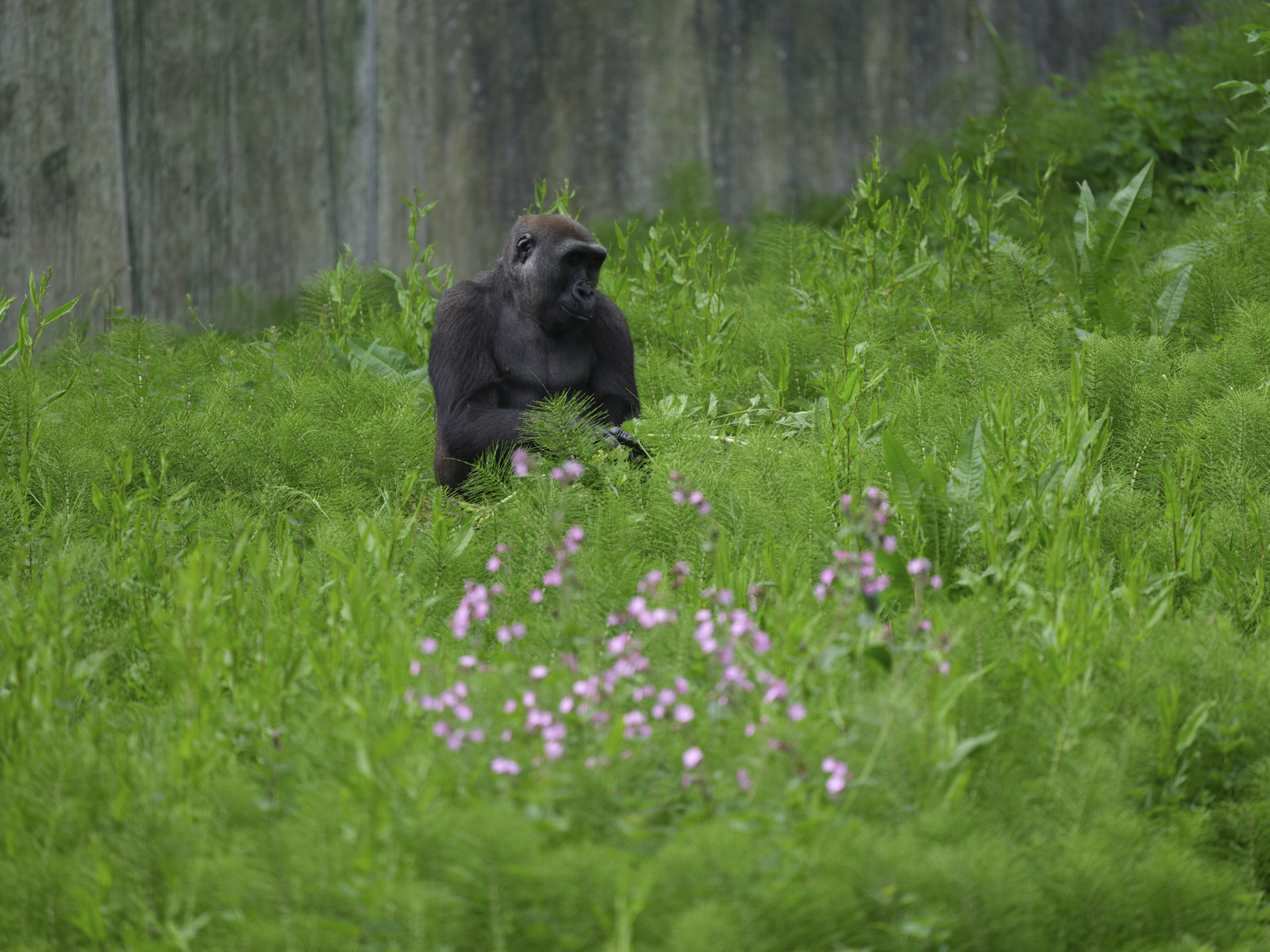

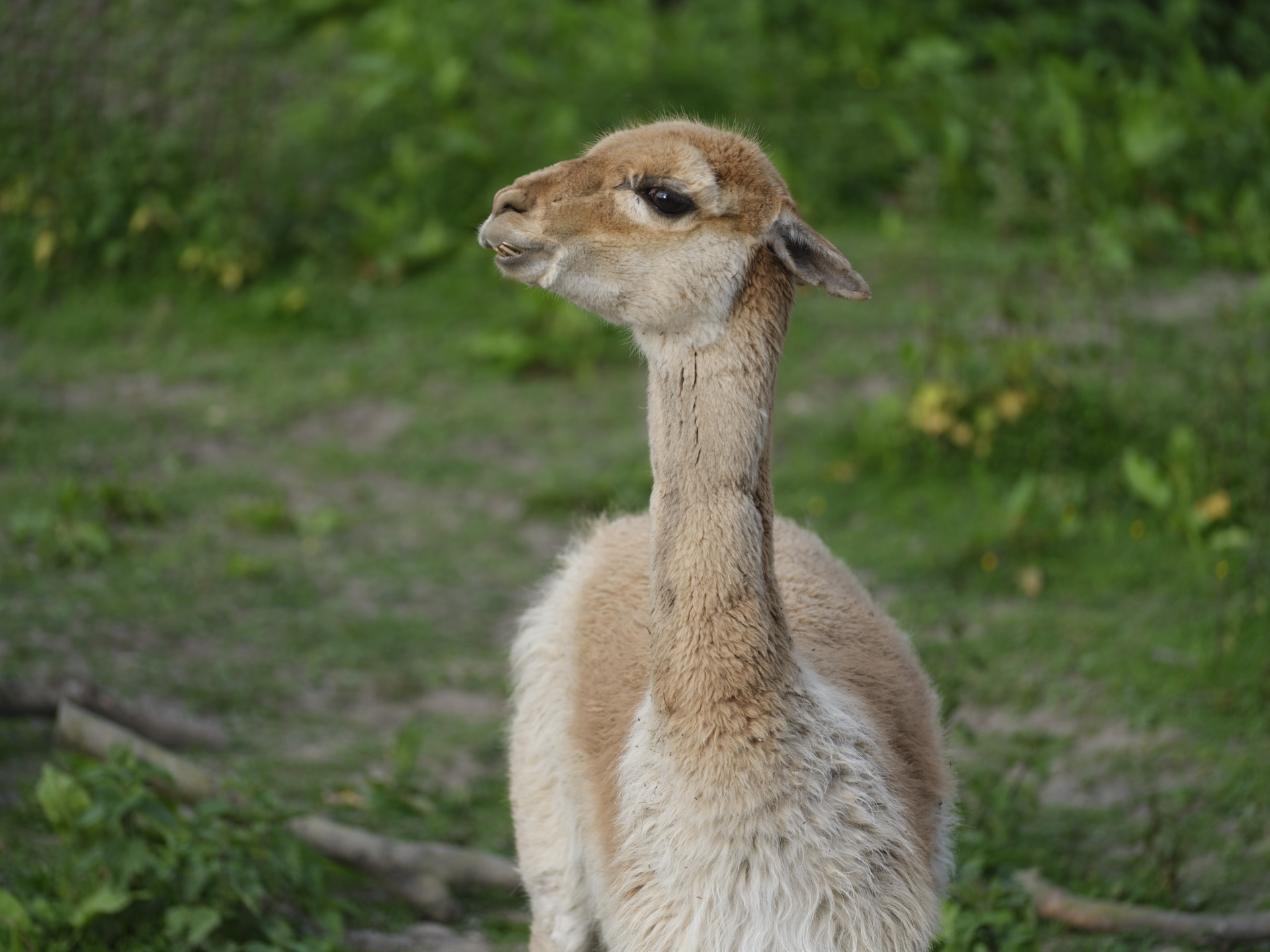
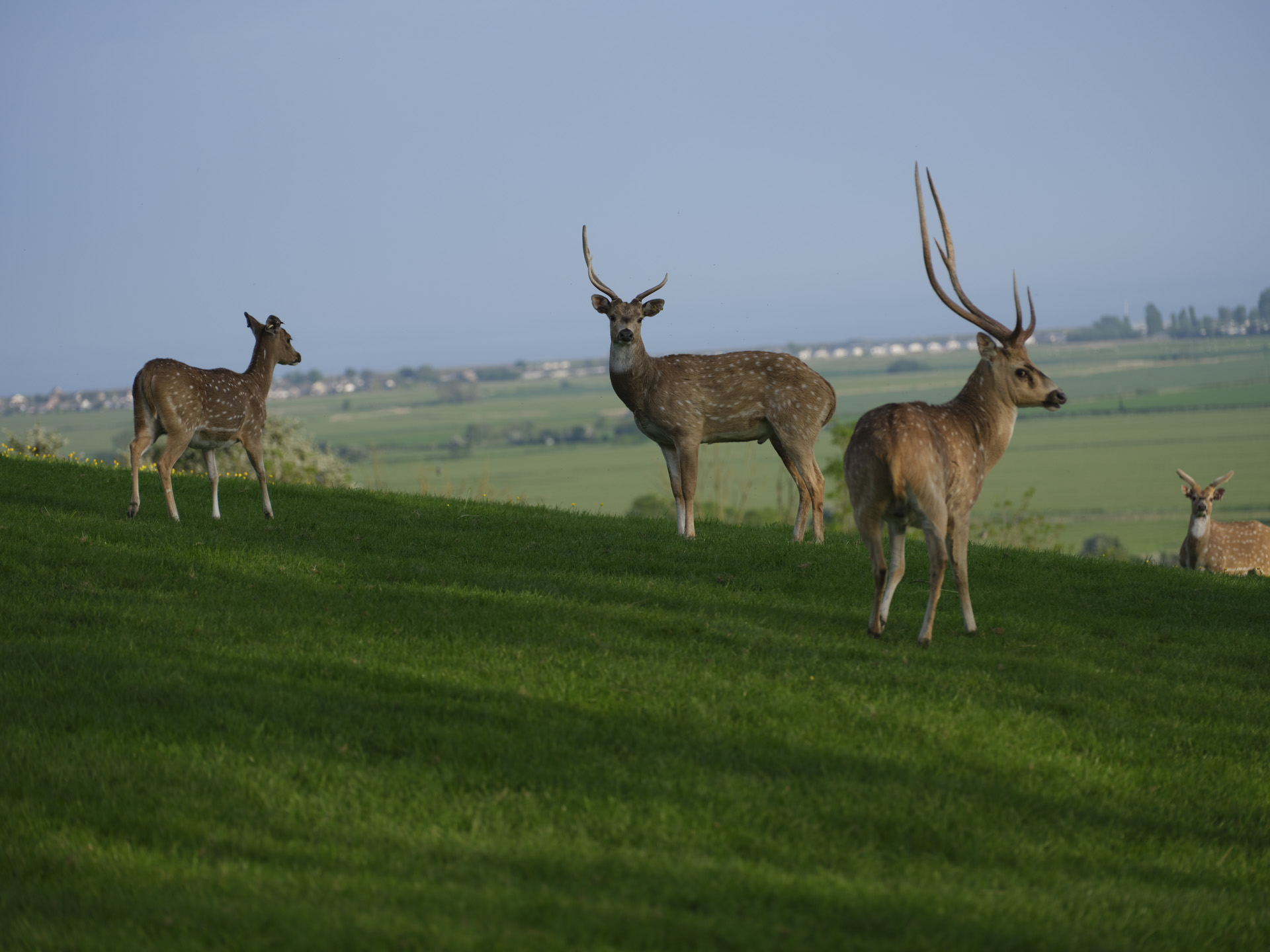
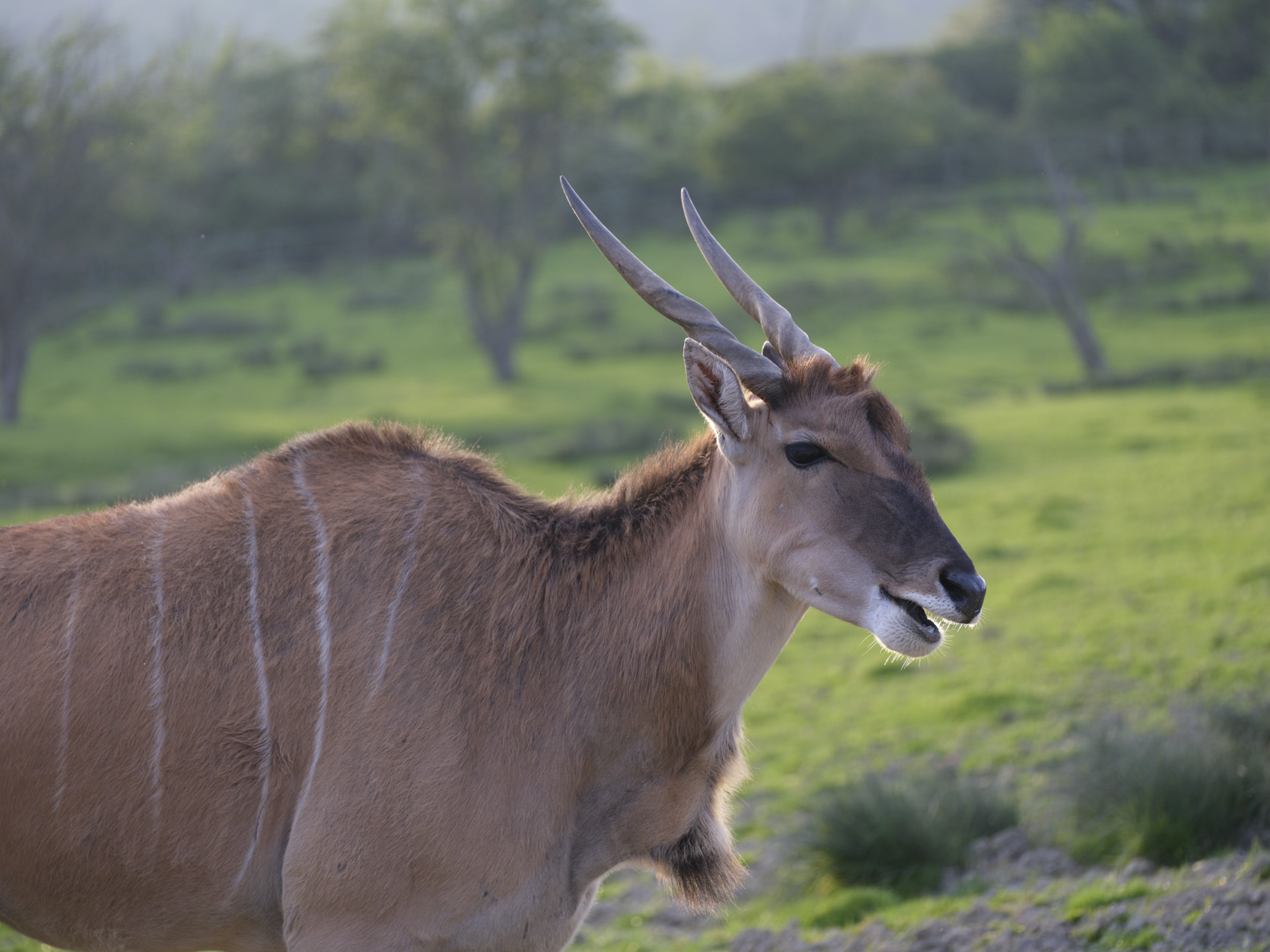
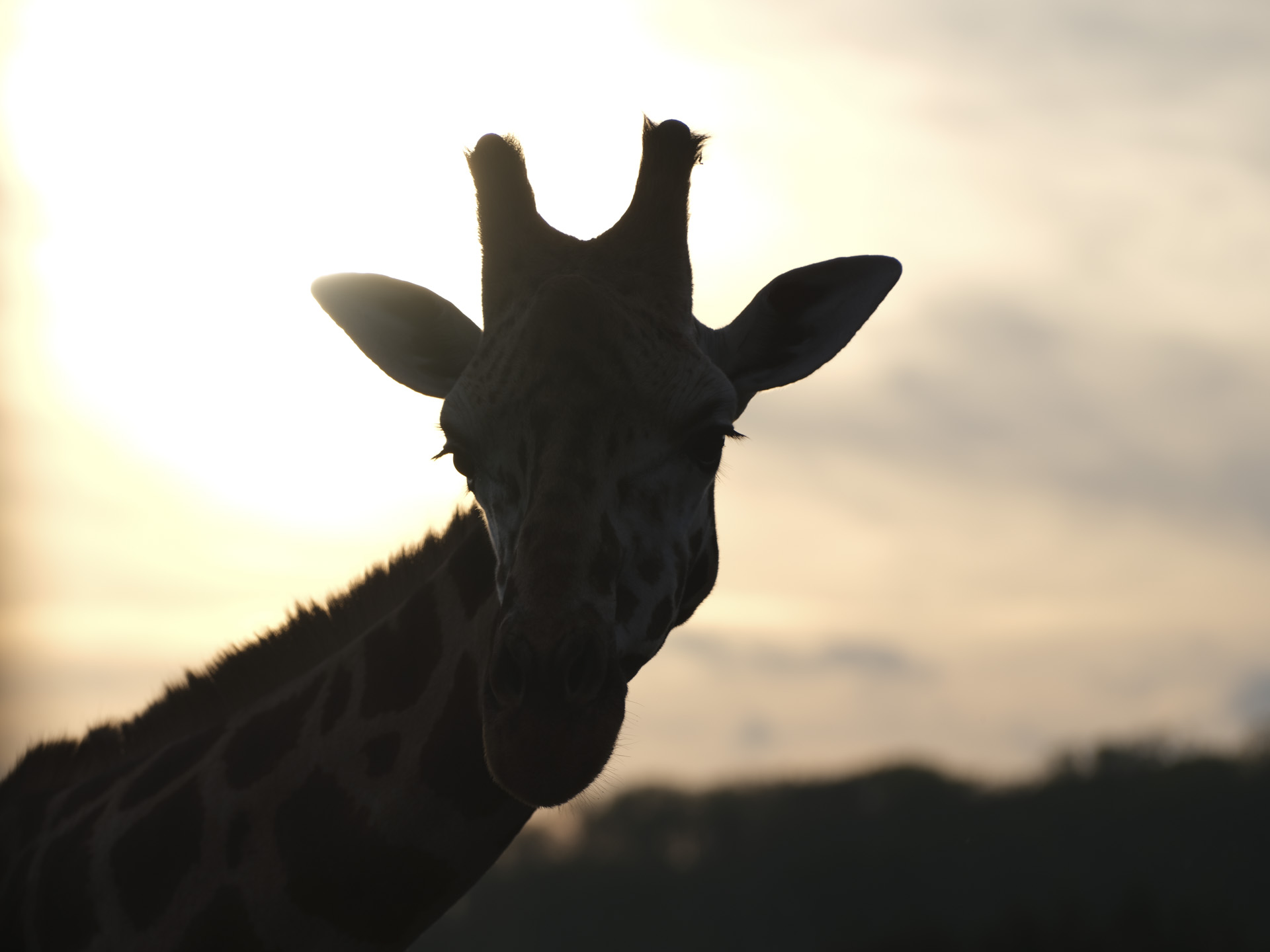



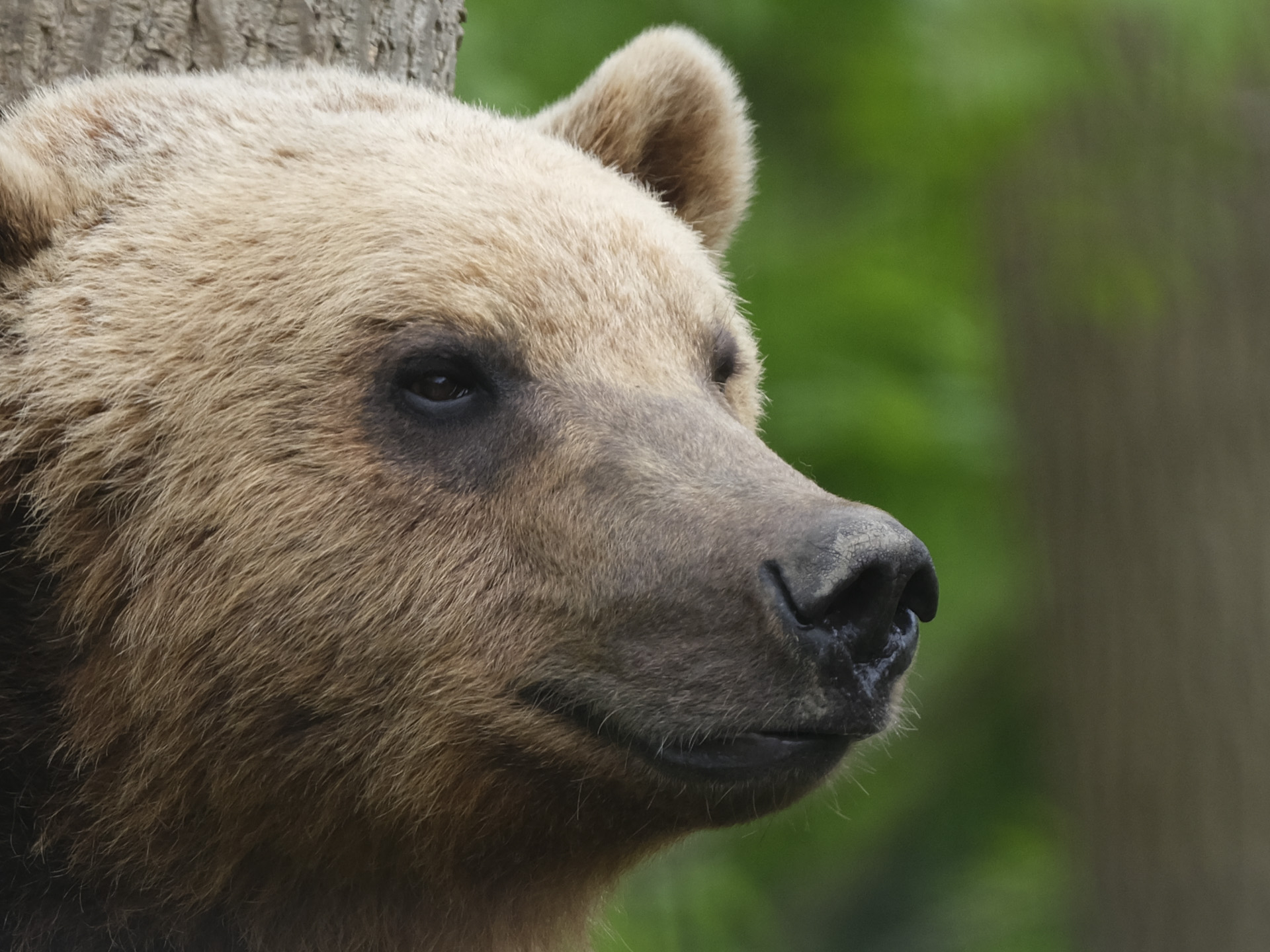
Image quality isn't just about detail – color matters, too, and I'm a fan of Fujifilm's straight-out-of-the-box standard color profile in this sensor format. Of course, it being Fujifilm you also get the full range of Film Simulations – color profiles inspired by Fujifilm's film, such as Astia and Velvia and most recently, Reala Ace.
I'm not sure how good image quality will be in low light, having just a few examples from my day with the camera. Photos of the gorilla in an enclosure (see below), shot at F5.6, 1/500sec and ISO 12,800, gave me the closest indicator, with detail not nearly as clean as when shooting at ISO 1600 or lower.
The GFX100S II has decent lenses to choose from – I've used a fair few GF lenses down the years and have always been impressed by their quality. They're quite capable of resolving intricate detail, but also of superbly controlling distortion and flare.
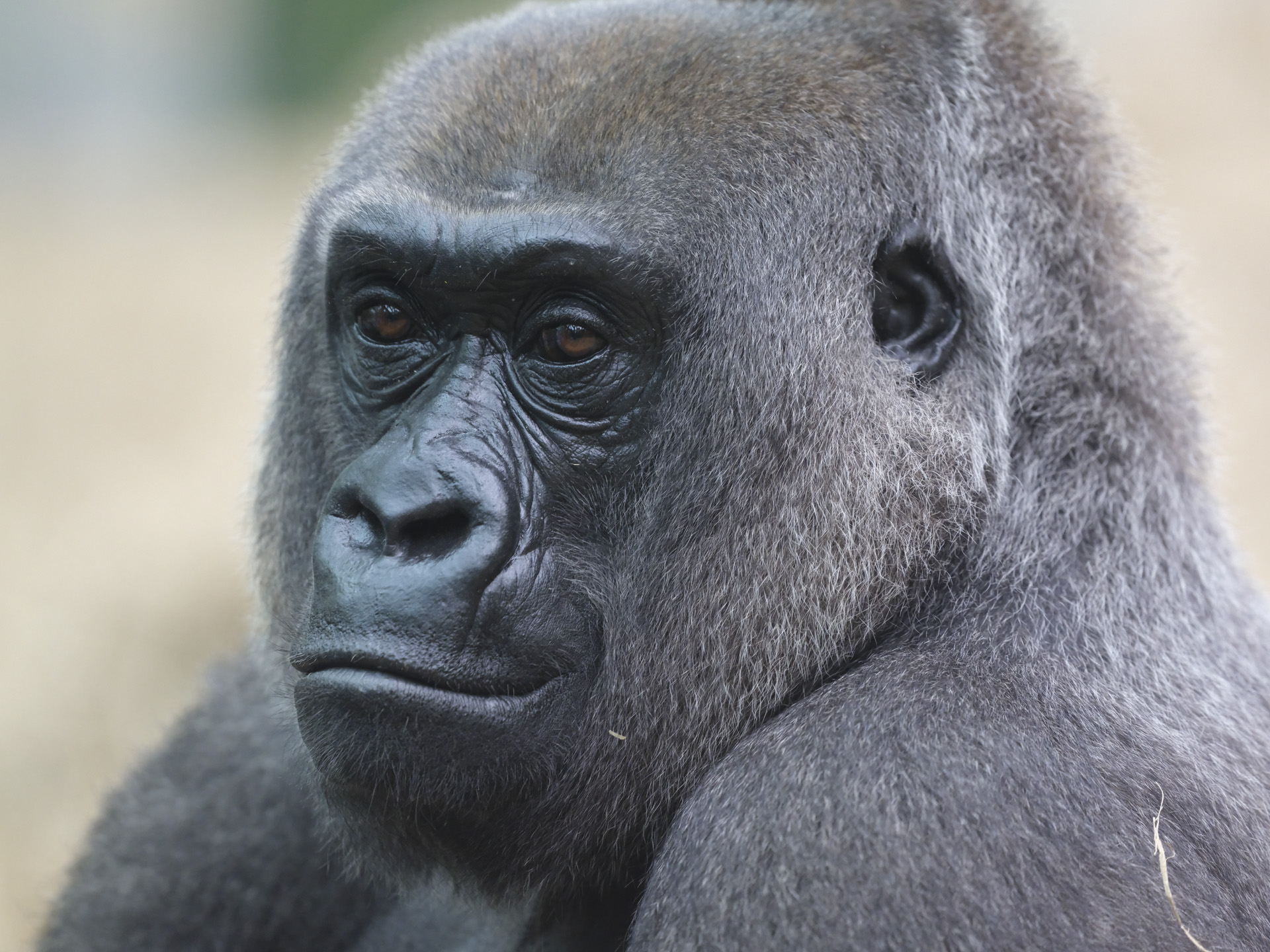
We can't expect the GFX100S II to pack all the same features as its pricier sibling the GFX100 II, and filmmakers in particular will feel the compromises the most. Where the flagship model shoots 8K video, the GFX100S II only records 4K up to 30fps, with no slow-motion option. Still, it's not all bad news, because you can record in superior 10-bit 4:2:2 internally, plus output raw video to an external recorder.
Fujifilm told us that the sensor is a variation of the 'HS' sensor used in the GFX100 II, and its sensor readout is a little slower. This means more potential for rolling shutter in video and in fast action photos, which can look ugly. I'll be checking this out more when I get my hands on the camera again.
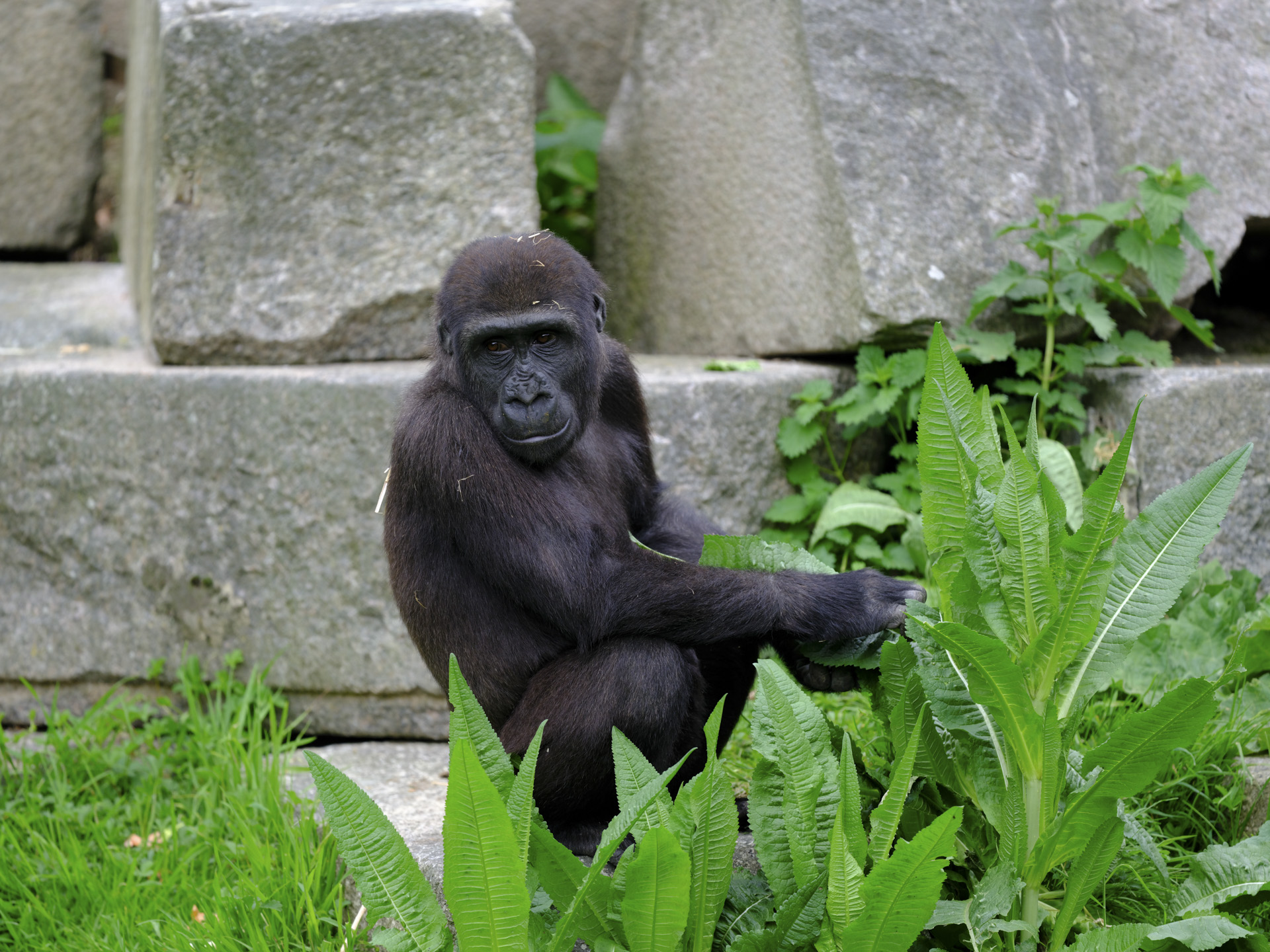
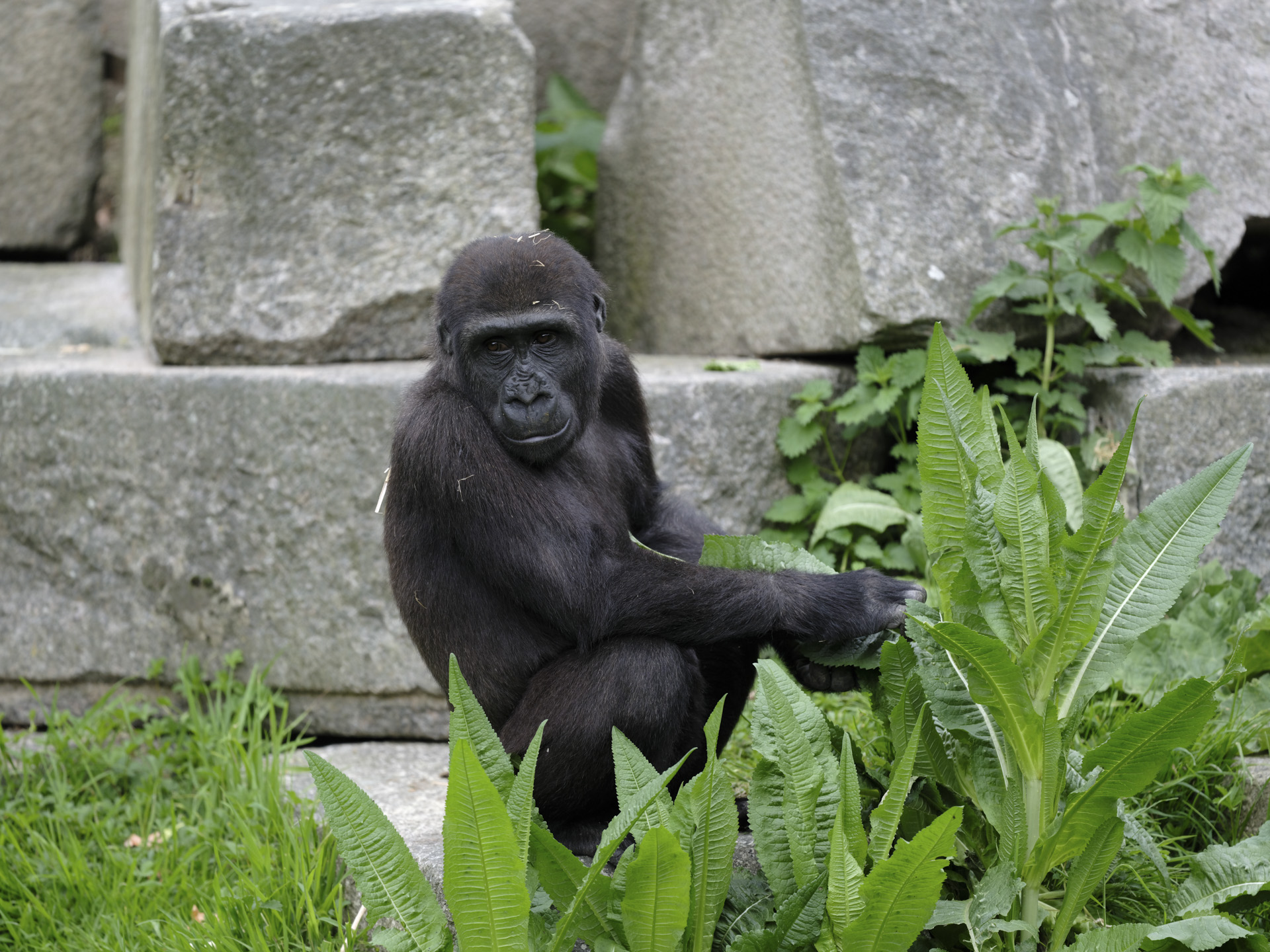
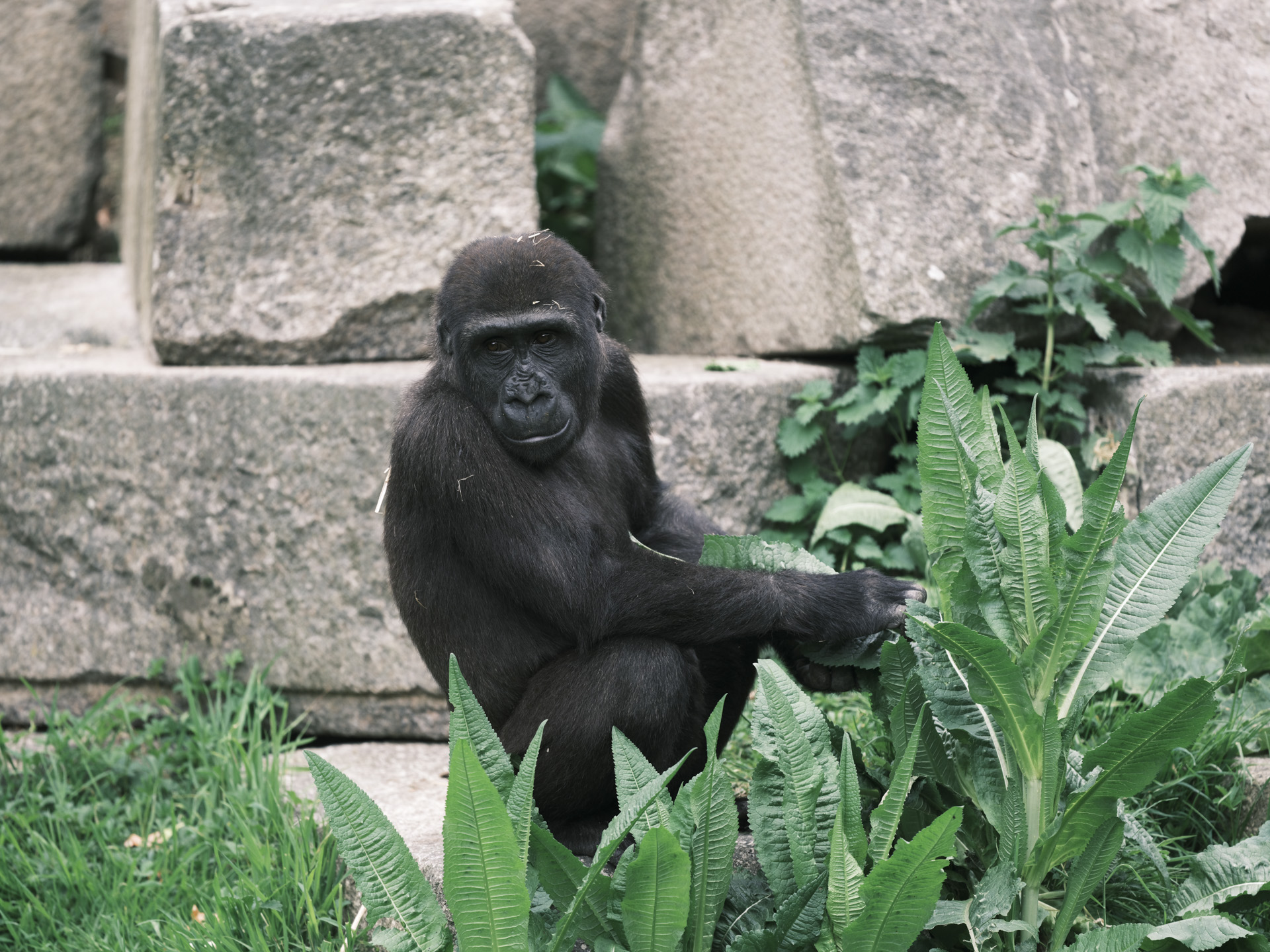
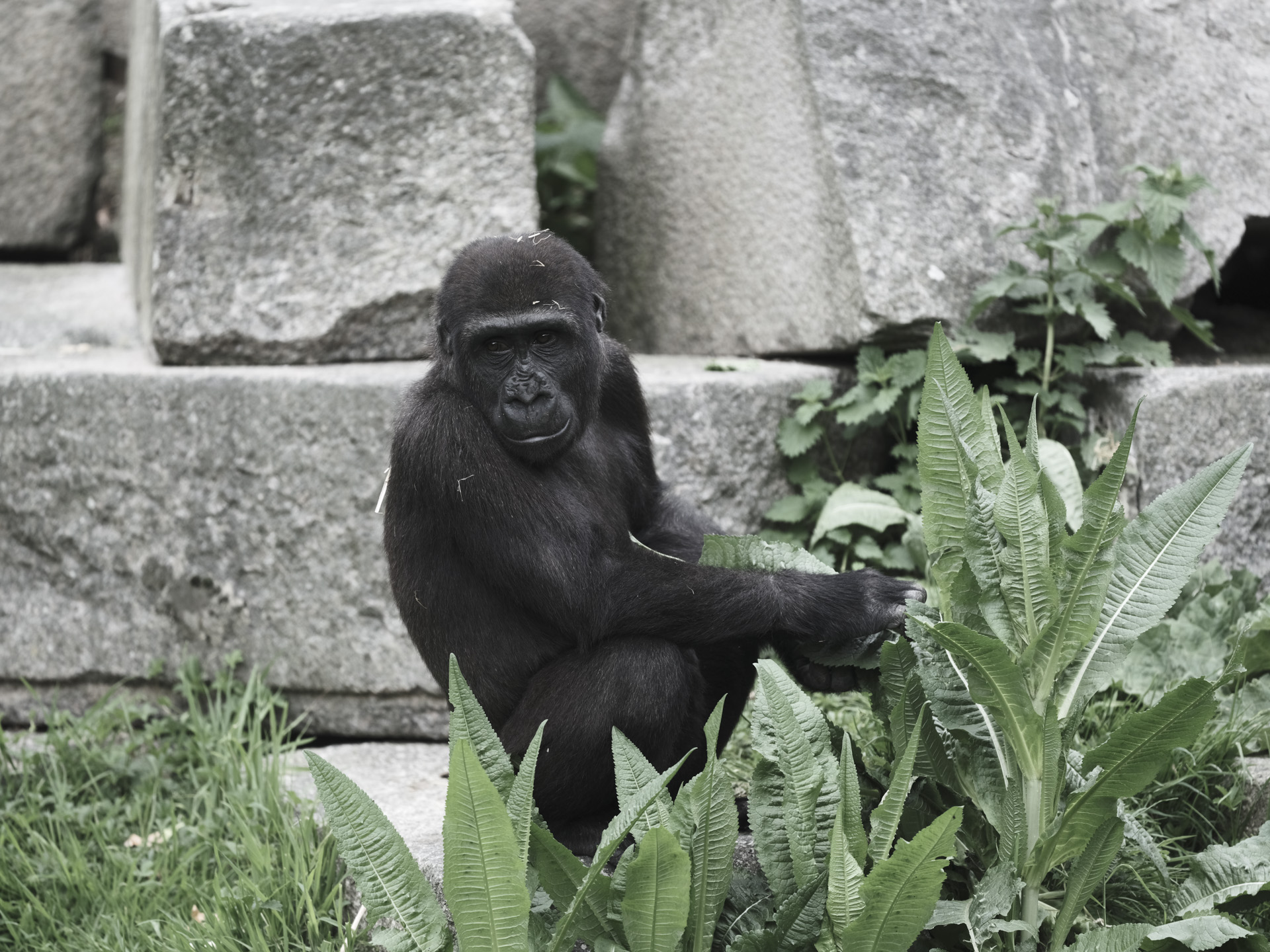
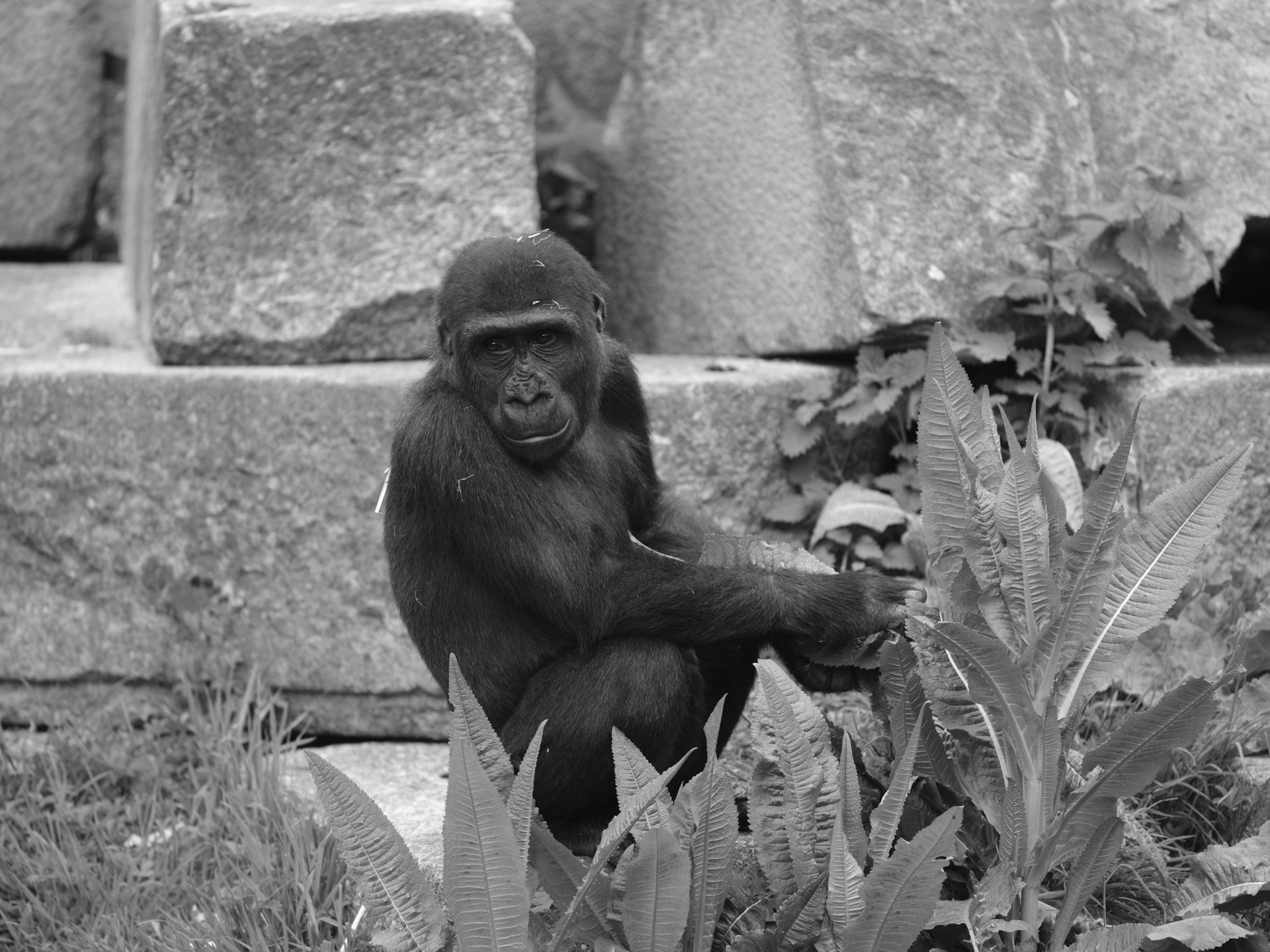
How we tested the Fujifilm GFX100S II
- 24 hour period
- Mostly animal photography in a wildlife reserve
- Paired with the 100-200mm F5.6 and 500mm F5.6 lenses
I had the Fujifilm GFX100S II for a 24-hour period, during which time it was used extensively in a wildlife reserve taking pictures and videos of exotic animals large and small, out in the open and in enclosures, through foliage and with clear sight.
The camera was paired with the GF 100-200mm F/5.6 and new GF 500mm F5.6 lenses and various focus modes employed including animal detection autofocus.
First reviewed May 2024

Tim is the Cameras editor at TechRadar. He has enjoyed more than 15 years in the photo video industry with most of those in the world of tech journalism. During his time as Deputy Technical Editor with Amateur Photographer, as a freelancer and consequently editor at Tech Radar, Tim has developed a deeply technical knowledge and practical experience with cameras, educating others through news, reviews and features. He’s also worked in video production for Studio 44 with clients including Canon, and volunteers his spare time to consult a non-profit, diverse stories team based in Nairobi. Tim is curious, a keen creative, avid footballer and runner, and moderate flat white drinker who has lived in Kenya and believes we have much to enjoy and learn from each other.
What is a hands on review?
Hands on reviews' are a journalist's first impressions of a piece of kit based on spending some time with it. It may be just a few moments, or a few hours. The important thing is we have been able to play with it ourselves and can give you some sense of what it's like to use, even if it's only an embryonic view. For more information, see TechRadar's Reviews Guarantee.
